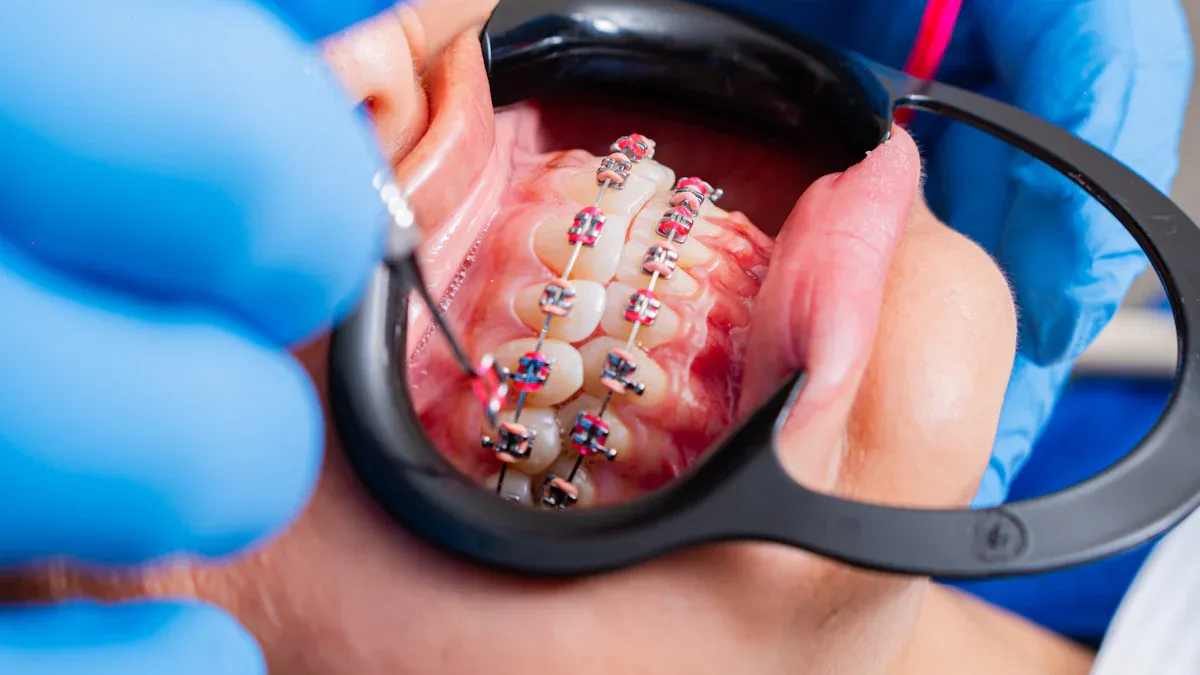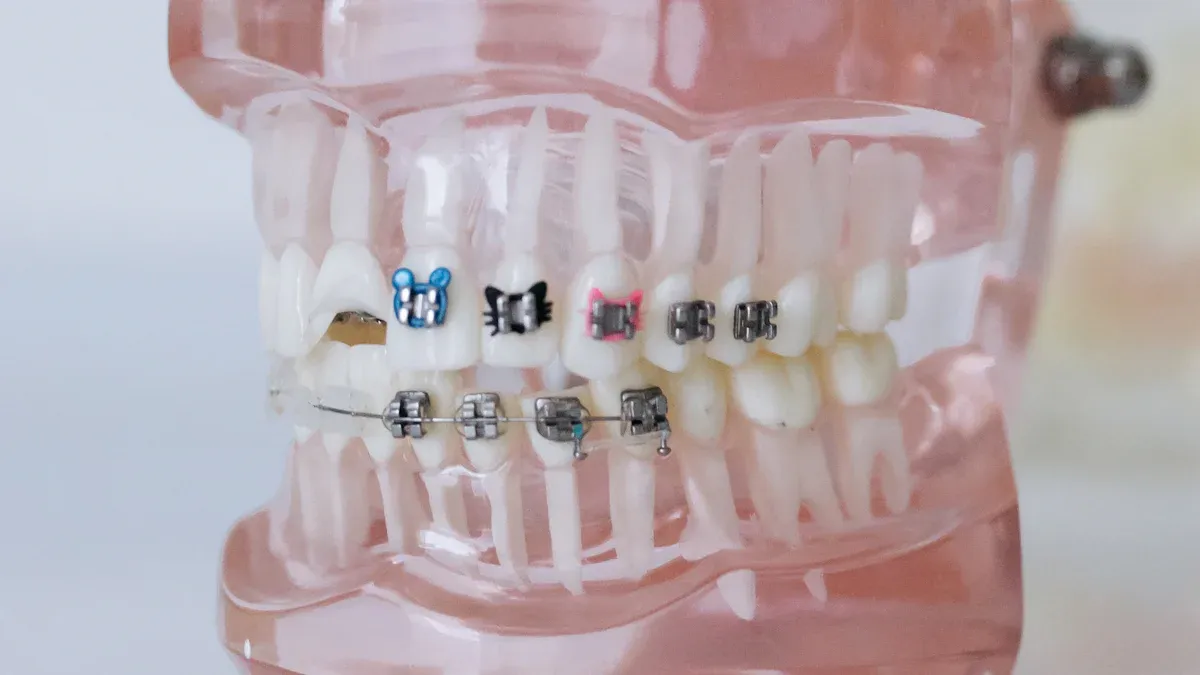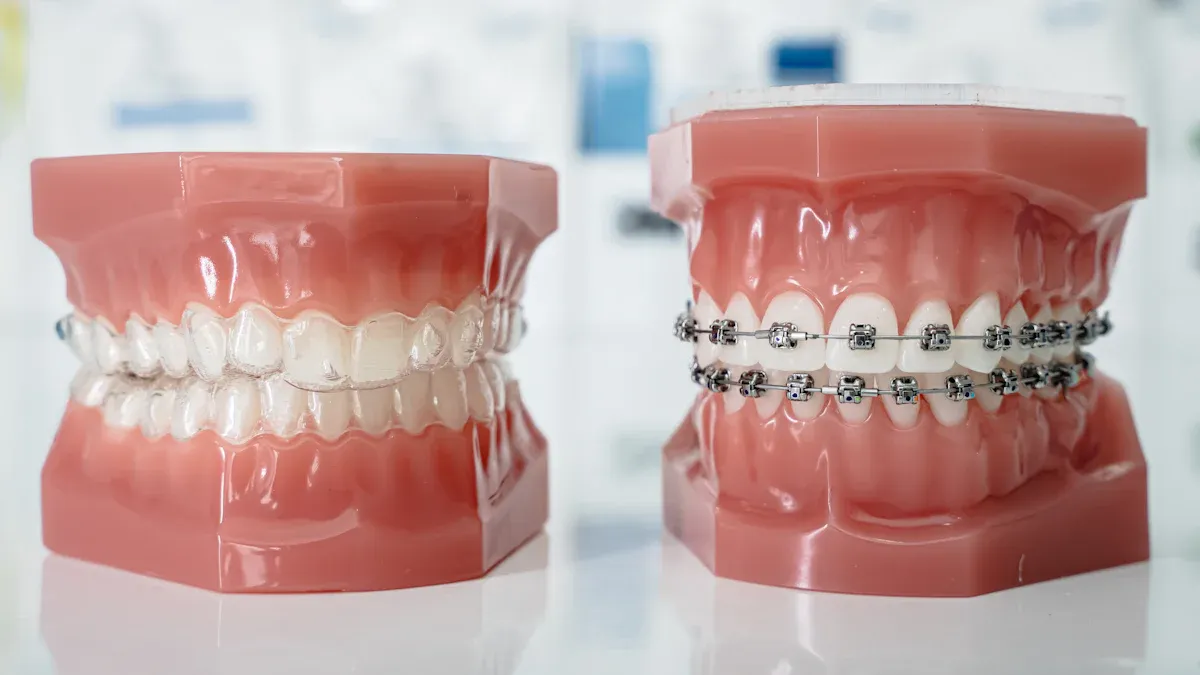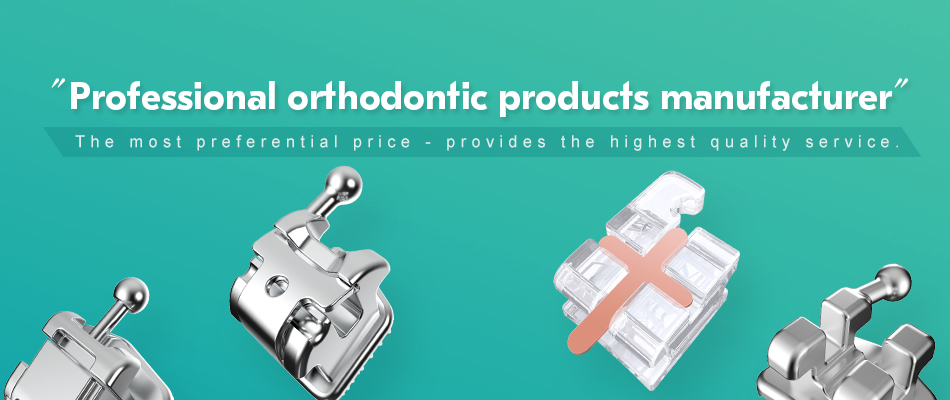
Orthodontic treatments have advanced, providing options such as traditional braces and Self Ligating Brackets. Self Ligating Brackets incorporate a built-in mechanism to hold the wire in place, removing the need for elastic ties. This modern design can enhance your comfort, improve hygiene, and optimize treatment efficiency. Recognizing these distinctions allows you to make a well-informed choice for your dental care.
Key Takeaways
- Self-ligating braces have a sliding clip. This lowers friction and makes them more comfortable than regular braces.
- These braces don’t need elastic bands. This makes cleaning your teeth easier and helps keep your mouth healthy.
- Talk to your orthodontist to pick the right braces. Think about comfort, care, and how long treatment will take.
Understanding Traditional Braces

Components and Mechanism
Traditional braces consist of several key components that work together to align your teeth. These include brackets, archwires, and ligatures. Brackets are attached to the surface of each tooth and serve as anchors for the archwire, which applies pressure to guide your teeth into the correct position. Ligatures, often elastic or metal ties, secure the archwire to the brackets.
Different types of brackets are available, each with unique materials and properties. Here’s a breakdown:
| Type of Bracket | Material | Advantages | Disadvantages |
|---|---|---|---|
| Stainless Steel (SS) | Stainless Steel | Affordable, durable, high stiffness, biocompatible, corrosion resistant | Aesthetically unpleasing, requires soldering, low springback compared to NiTi alloy |
| Ceramic | Alumina | Aesthetic appeal, strength, durability, stability in color | Expensive, fragile, can stain easily, complicated manufacturing process |
| Monocrystalline | Sapphire | Higher tensile strength than polycrystalline, better than steel | Poor fracture toughness, resistance to crack propagation compared to SS |
| Polycrystalline | Alumina | Cost-effective, good aesthetic quality | Less tensile strength than monocrystalline, poor fracture toughness compared to SS |
Understanding these components helps you appreciate how traditional braces function to achieve precise tooth alignment.
Benefits of Traditional Braces
Traditional braces offer several advantages. They are highly effective for correcting complex dental issues, including severe misalignments and bite problems. Studies show that traditional braces can achieve immediate correction of thoracic curves by 70% and lumbar curves by 90%. They also improve lumbar lordosis by an average of 5° and thoracic apical rotation by 2°. These results highlight their reliability in delivering noticeable improvements.
Additionally, traditional braces are versatile. Orthodontists can adjust them to address a wide range of dental concerns. Their durability ensures they remain effective throughout your treatment, making them a trusted choice for many patients.
Drawbacks of Traditional Braces
While traditional braces are effective, they come with some challenges. The use of elastic or metal ties can make cleaning your teeth more difficult, increasing the risk of plaque buildup. You may also experience some discomfort, especially after adjustments, as the wires and brackets apply pressure to your teeth.
Aesthetic concerns are another drawback. Metal brackets are more noticeable, which might make you feel self-conscious. Ceramic brackets offer a more discreet option, but they are fragile and can stain over time. Regular visits to your orthodontist for adjustments are also necessary, which may require a significant time commitment.
Exploring Self-Ligating Brackets

How Self-Ligating Brackets Work
Self Ligating Brackets use an innovative built-in mechanism to secure the archwire. Instead of relying on elastic bands, these brackets feature a sliding door or gate that holds the wire in place. This design minimizes friction and allows the wire to move more freely, applying continuous and controlled forces to your teeth. As a result, tooth movement becomes more efficient, potentially reducing overall treatment time.
These brackets are typically made from durable materials like stainless steel, ensuring strength and longevity. For those seeking a more discreet option, ceramic or clear materials are also available. This combination of functionality and aesthetics makes them a popular choice for modern orthodontic treatments.
Advantages of Self-Ligating Brackets
Self Ligating Brackets offer several benefits that enhance your orthodontic experience. First, they often require fewer adjustments, which means you may spend less time at the orthodontist’s office. The reduced friction between the wire and brackets can also make the treatment more comfortable. Additionally, the absence of elastic ties simplifies cleaning, helping you maintain better oral hygiene throughout your treatment.
The popularity of these brackets has grown significantly in recent years. The global market share for Self Ligating Brackets reached 45.1% in 2022, with a value of USD 787.7 million. Projections indicate a compound annual growth rate (CAGR) of 6.6% from 2023 to 2033, highlighting their increasing adoption worldwide.
Limitations of Self-Ligating Brackets
While Self Ligating Brackets offer many advantages, they are not without limitations. Some studies have noted challenges in assessing pain outcomes during treatment. For example, the tools used to measure pain were not always validated, raising questions about the reliability of the data. Additionally, differences in patient age groups during studies could introduce bias, making it harder to draw definitive conclusions about their effectiveness compared to traditional braces.
Despite these challenges, Self Ligating Brackets remain a highly effective option for many patients. Consulting with your orthodontist can help you determine if they are the right choice for your needs.
Comparing Self-Ligating Brackets and Traditional Braces
Comfort and Patient Experience
Your comfort during orthodontic treatment plays a significant role in your overall experience. Self Ligating Brackets are designed to reduce friction and pressure on your teeth. This feature often results in a more comfortable treatment process. Unlike traditional braces, which use rubber bands that can create tension and discomfort, self-ligating options rely on a sliding mechanism. This design allows for smoother adjustments and less irritation.
Traditional braces, on the other hand, may cause more discomfort, especially after adjustments. The elastic ties can exert additional pressure, making the initial days after tightening more challenging. If comfort is a priority for you, self-ligating options might be worth considering.
Maintenance and Hygiene
Maintaining oral hygiene is crucial during orthodontic treatment. Self Ligating Brackets simplify this process by eliminating elastic ties, which can trap food particles and make cleaning difficult. With fewer components to clean around, you can brush and floss more effectively.
Traditional braces require extra effort to maintain cleanliness. The elastic ties can accumulate plaque and food debris, increasing the risk of cavities and gum issues. You may need to spend more time on your oral care routine to ensure your teeth and gums stay healthy.
Aesthetics and Appearance
If appearance matters to you, both options offer aesthetic solutions. Self Ligating Brackets are available in clear or ceramic materials, making them less noticeable. These options blend with your teeth, providing a more discreet look.
Traditional braces also offer ceramic brackets for a subtler appearance. However, the elastic ties can stain over time, affecting their aesthetic appeal. If you prefer a cleaner and more consistent look, self-ligating options might align better with your goals.
Treatment Time and Efficiency
Self Ligating Brackets are often associated with faster treatment times. Their design reduces friction, allowing your teeth to move more freely. This efficiency can lead to quicker results in some cases. Adjustments are also faster, as there are no elastic ties to replace.
Traditional braces, while effective, may require more frequent adjustments. The additional friction from elastic ties can slow down tooth movement. If you’re looking for a potentially shorter treatment duration, self-ligating options could be advantageous.
Cost Considerations
The cost of orthodontic treatment varies based on several factors, including the type of braces you choose. Self Ligating Brackets may have a higher upfront cost due to their advanced design and materials. However, the reduced need for adjustments could lower overall expenses in the long run.
Traditional braces are generally more affordable initially. Their widespread availability and simpler design contribute to their lower cost. If budget is a primary concern, traditional braces might be a more accessible option for you.
Choosing between self-ligating brackets and traditional braces depends on your unique needs. Self-ligating brackets offer comfort and easier maintenance, while traditional braces provide versatility for complex cases.
Post time: Apr-09-2025


